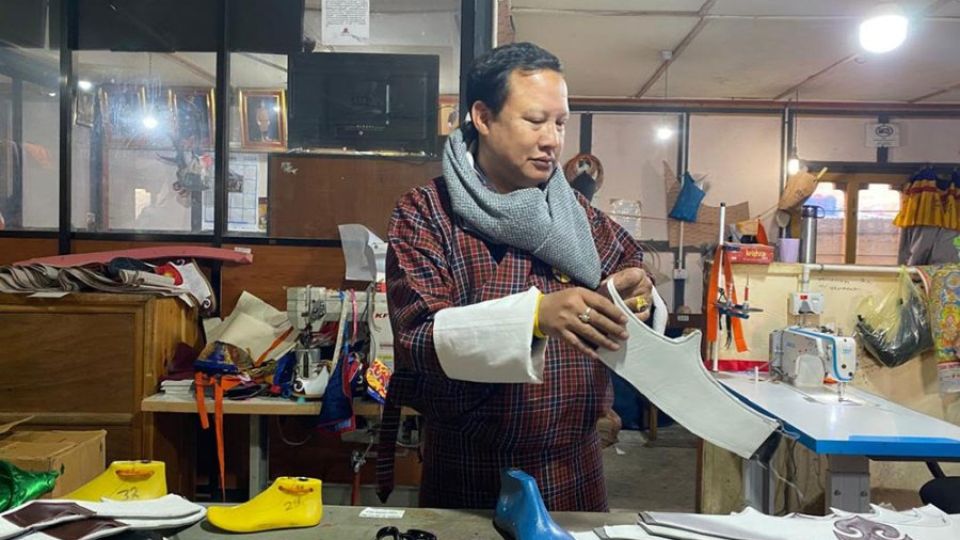February 7, 2025
THIMPHU – For centuries, traditional Bhutanese boots, known as tshoglam, were a symbol of cultural and national identity. By the late 1990s, this age-old craft was gradually vanishing. One man saw an opportunity in preserving this heritage.
Meet Jangchubla, 48, one of the few master bootmakers in the country.
Over the past 23 years, he has dedicated his life to revitalising and modernising the tshoglam. Today, he runs Traditional Boot House in Chubachu, Thimphu, producing traditional boots and a range of cultural items.



A student of painting at the National Institute for Zorig Chusum, the premier school for traditional arts in the country, Jangchubla’s path took a turn when he observed the near disappearance of tshoglam artisans.
“At the time, there were only a handful of skilled bootmakers,” said Jangchubla. “Recognizing the urgency, Lyonpo Sangay Ngedup arranged for me to apprentice under Ap Wangdi, a veteran bootmaker in Paro.”
The training introduced him to the intricacies of bootmaking, laying the foundation for his career. Determined to deepen his knowledge, he travelled to Binnaguri in West Bengal, India where he learned new techniques from local shoemakers.
In 2002, Jangchubla founded Traditional Boot House with limited resources and a dream. The early years were a struggle. “We only had a few tailoring machines, and sourcing leather and soles was difficult and expensive,” he said.
Despite the challenges, his manufacturing unit gained a reputation for quality craftsmanship and the business has since grown steadily.
Today, Traditional Boot House employs 13 workers—many of them graduates of the National Institute for Zorig Chusum. Some are personally trained by Jangchubla, who believes that hands-on experience is the best way to preserve the craft for future generations.
The business is family run, with his wife, Thinlay Wangmo, helping run the operations. Her support has been critical to its growth.
The manufacturing unit produces boots for ceremonial events, cultural functions, and officials. Over time, it has expanded its services to include school shoes, embroidery, and name tag production for organisations like the Desuung.
Despite his deep respect for tradition, Jangchubla is not afraid to innovate. In 2008, he introduced half-length tshoglam with modern elements like heels and chains, aiming to make the footwear more practical for everyday use while retaining its cultural essence.
“We want to make tshoglam as comfortable as casual shoes without sacrificing the craftsmanship that defines them,” he said.
In his pursuit to improve the craft, Jangchubla has visited Thailand, Delhi, and Denmark to learn about new techniques and materials. His work was also showcased at Denmark’s Moesgaard Museum in 2019, bringing international recognition to Bhutan’s traditional boots.
Scaling production has been another focus. “When we started, most of the work was done by hand. Finishing three boots in a day felt like a victory,” he said.
Today, improved machinery allows Traditional Boot House to produce more than 20 pairs daily.
Yet, challenges persist. Sourcing high-quality raw materials is difficult, and competition from mass-produced footwear threatens the survival of handmade crafts. Changing consumer preferences add further pressure.
But Jangchubla remains undeterred. “For me, tshoglam is more than footwear—it is a living symbol of our identity, resilience, and adaptability,” he said.
Traditional Boot House is today a model of how heritage can evolve without losing its soul. By training new artisans, Jangchubla is ensuring the next generation inherits the knowledge and skills needed to keep the tradition alive.
“My mission goes beyond making boots. I want to ensure that every pair carries the story of Bhutan’s past into its future,” he said.


